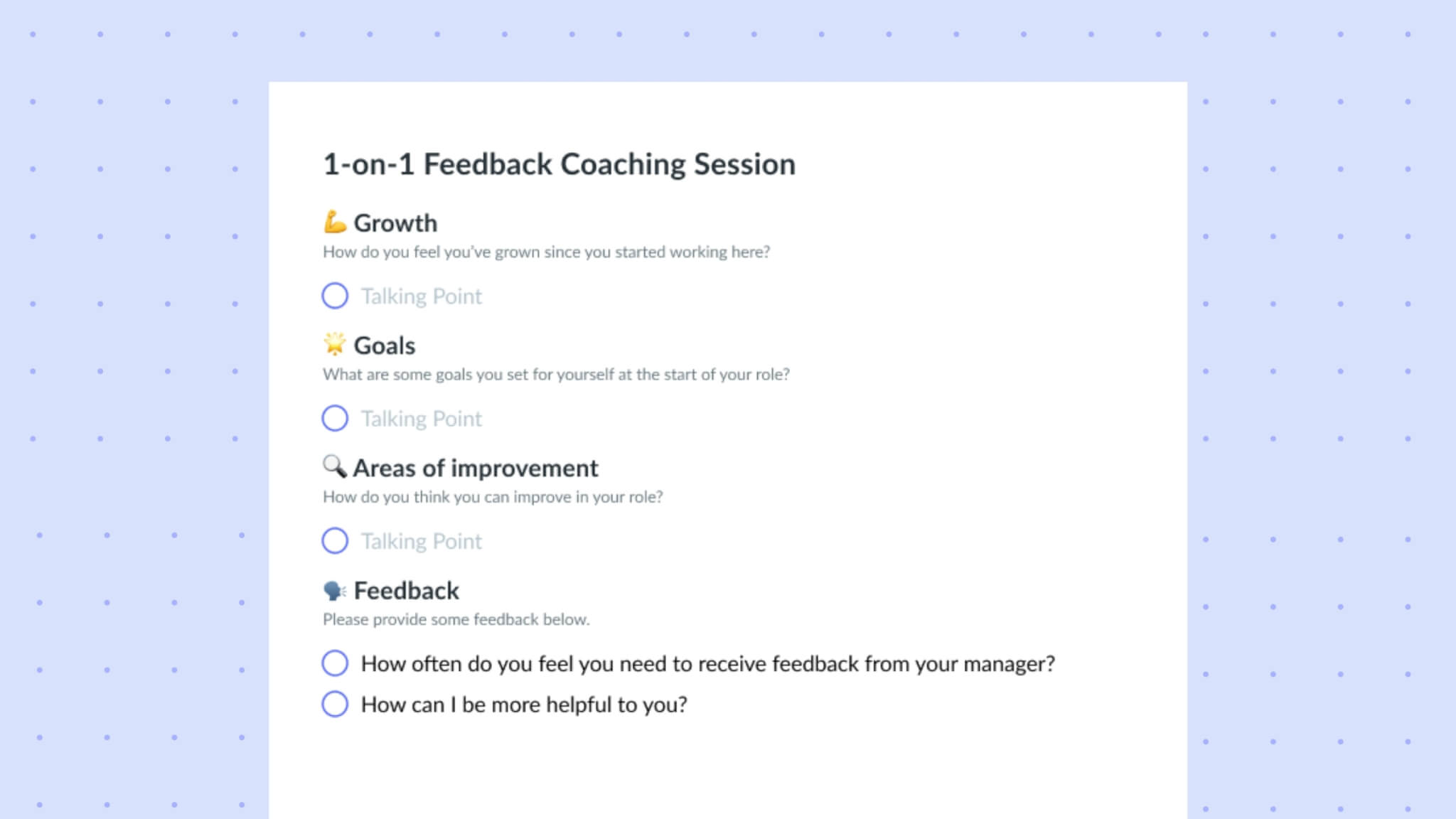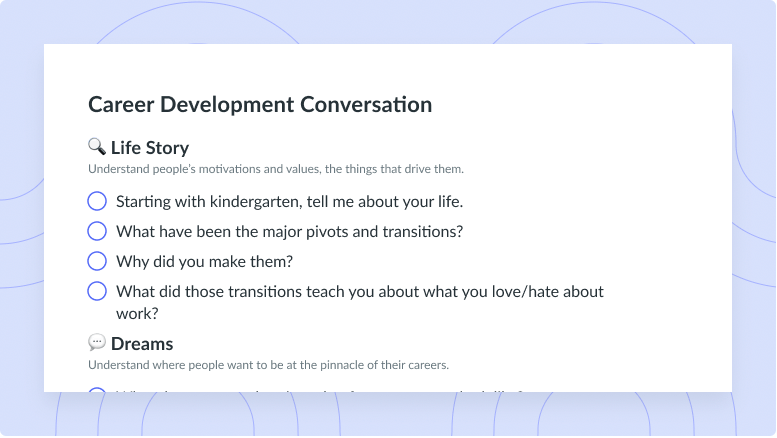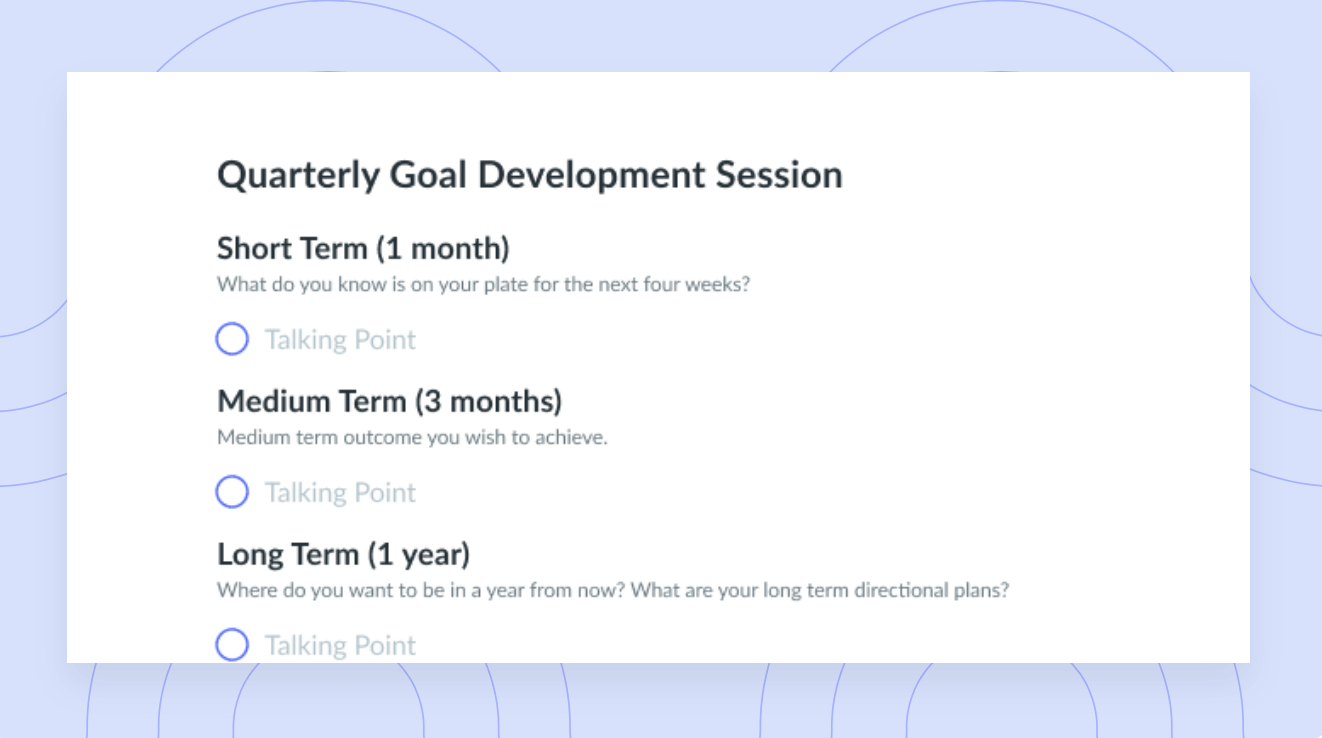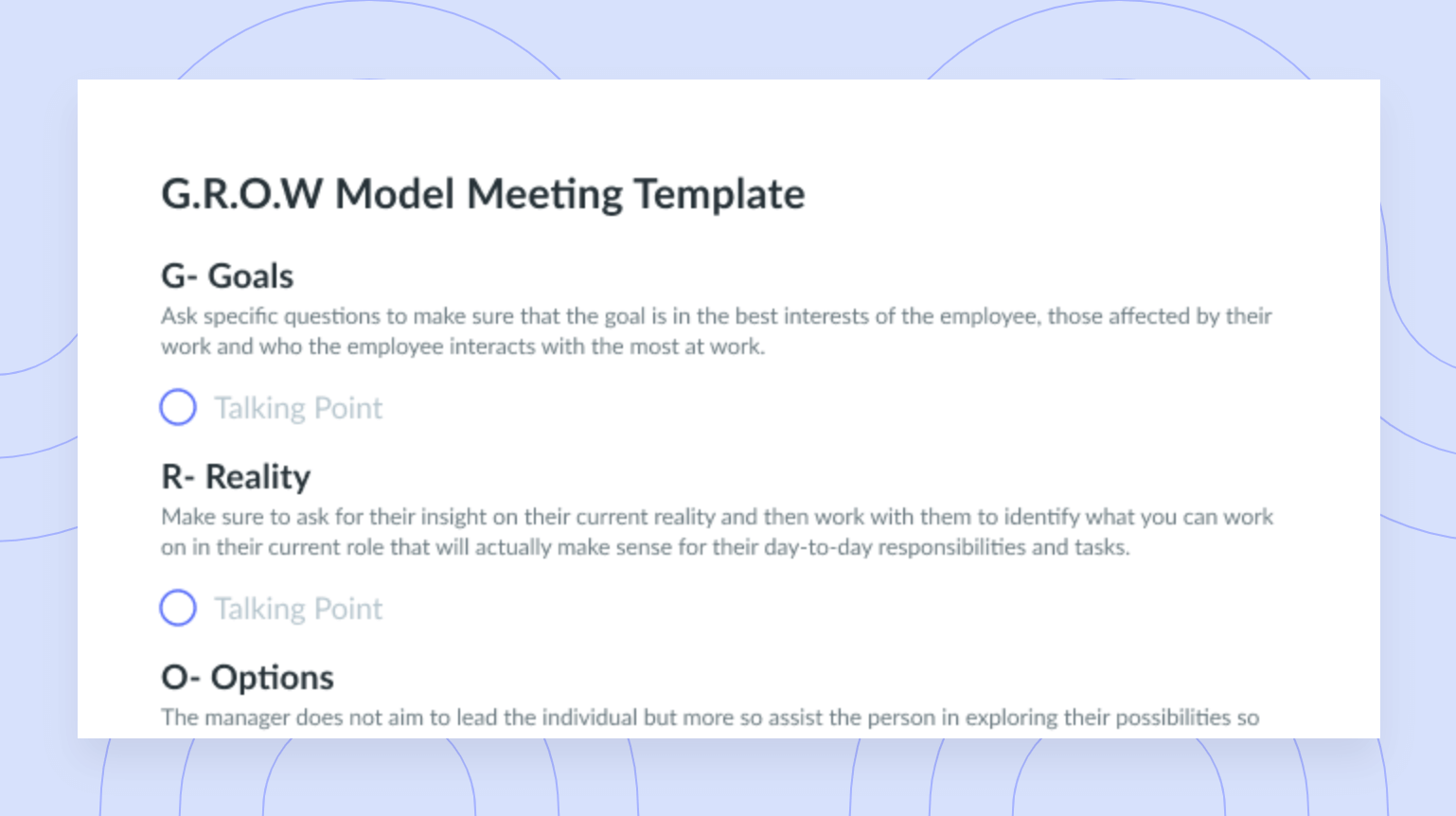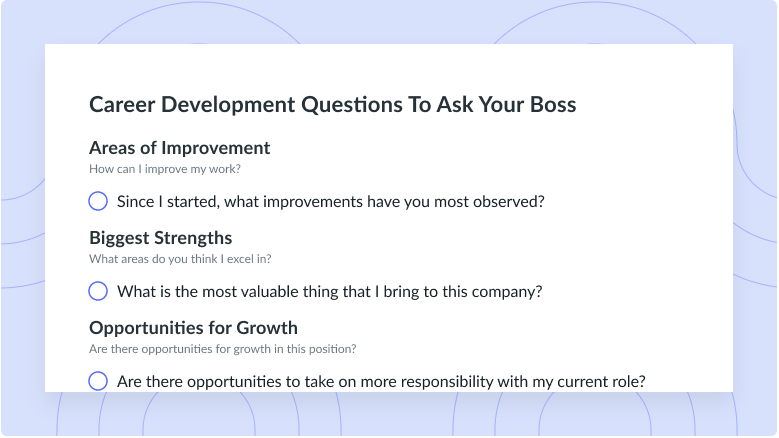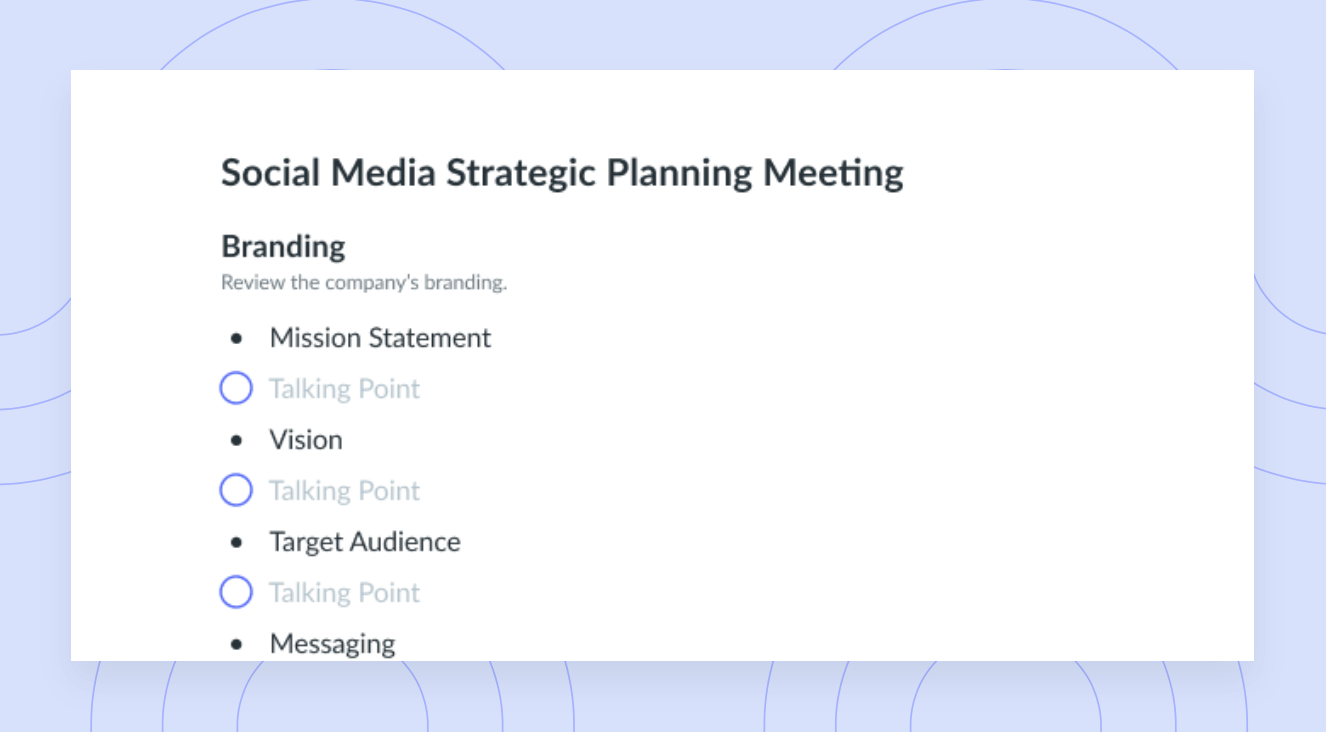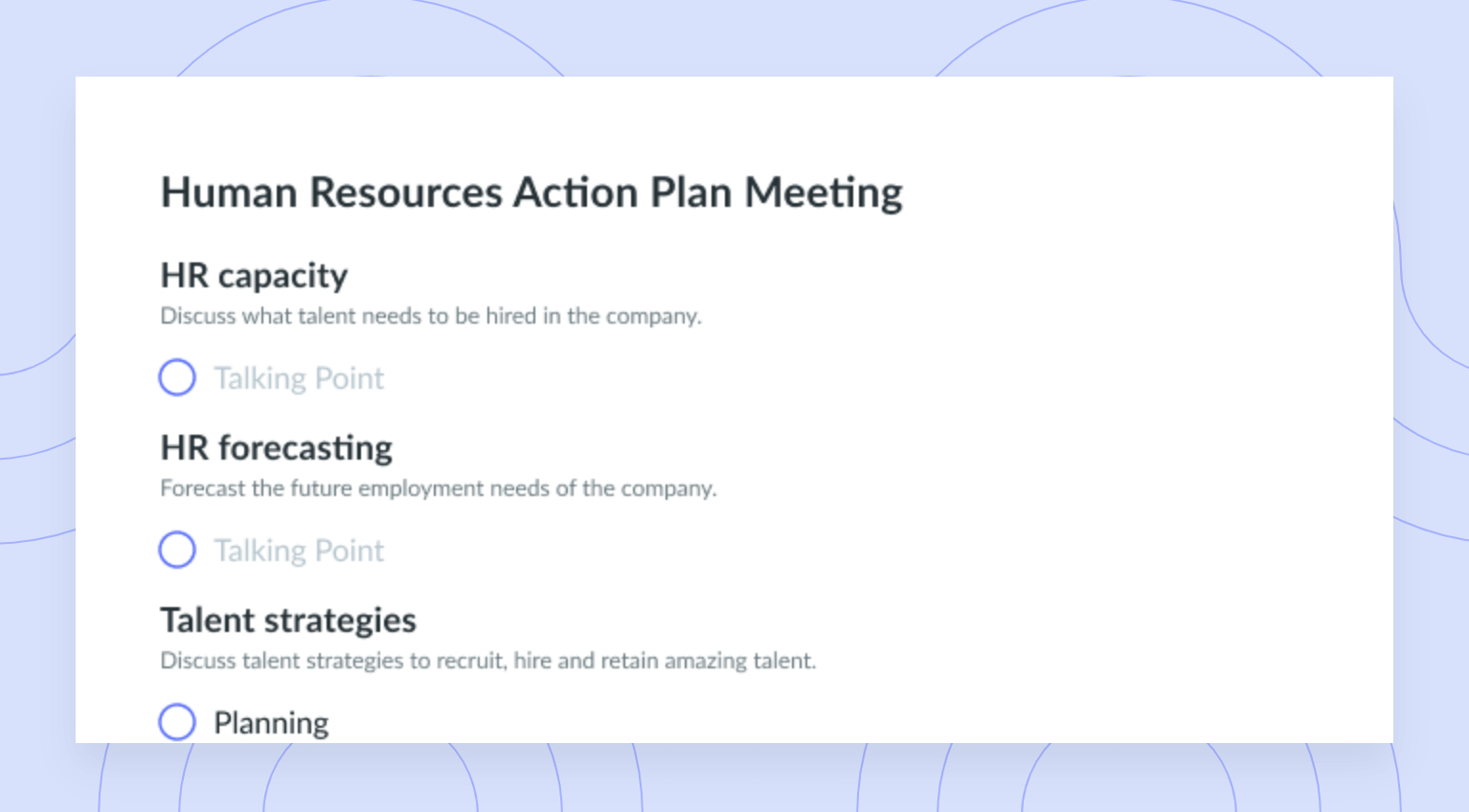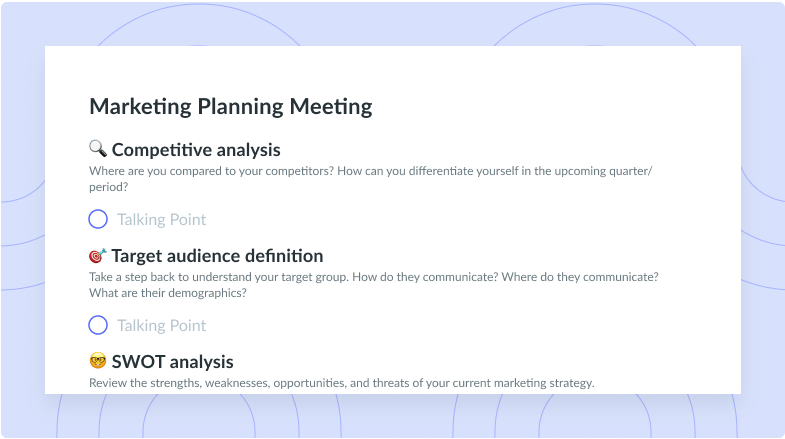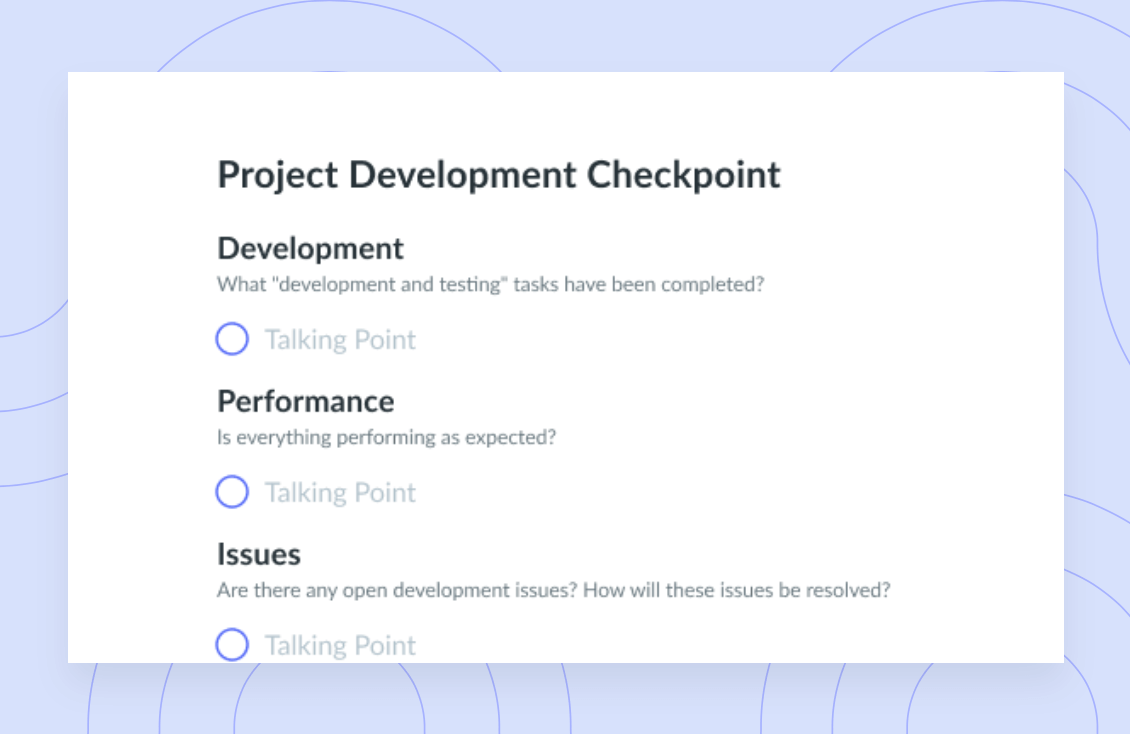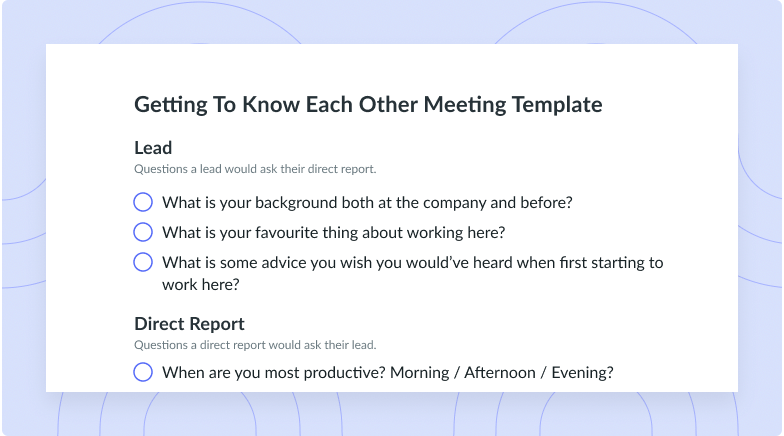Skill Development Plan: What It Is And How to Create One
With a skill development plan, you can take a more proactive approach to professional growth. Learn what one is & how to create one.
If you’ve ever played a video game, you probably know how experience works: the more you do something, the better you get at doing it. It works a bit slower in the real world, but there are a few tricks you can use to help your team level up.
A skill development plan is a great tool for team members or managers interested in professional development. Keep reading for an in-depth guide on skill development plans – and how to make plans that can help you or your team excel.
- What is a skill development plan (SDP)?
- How to create a skill development plan
- Benefits of skill development planning
What is a skill development plan (SDP)?
A skill development plan is pretty much exactly what it sounds like: a detailed series of steps that guide someone through skill development.
No matter how good someone is at their job, there will usually be areas for improvement. That’s not a knock against them – even the most skilled, knowledgeable people can learn something new about topics they’ve known well for years. The more you learn about a job, the more you realize what you don’t yet know. A skill development plan can help you shine a spotlight on those skill gaps and come up with strategies to patch them over.

Run efficient meetings, come to a decision, and get back to work
Level up your meeting habits to boost engagement and productivity with a collaborative meeting agenda. Try a tool like Fellow!

How to create a skill development plan
Creating a skill development plan is like running a race. You draw a finish line in the sand that represents a development goal and work toward it step by step. The trick is finding the right steps to take so that you and your team don’t veer off course. Here’s how to create a great skill development plan.
- Figure out your or your team members’ ambitions
- Find strengths and weaknesses
- Build a development strategy
- Set the plan into motion
1Figure out your or your team members’ ambitions
Skill development can’t start if you haven’t defined your finish line. Without a goal to work toward, any improvements might not be relevant.
The first thing you should do when developing a plan is sit down with the team member (or yourself if you’re doing this for you). A one-on-one meeting, for example, is a great time to jot down some short- and long-term ambitions. A skill development plan can accommodate most goals but, in this case, you probably want to shoot for something job-related. For example, earning a promotion and climbing the organization’s ladder is a common goal.
2Find strengths and weaknesses
Let’s say you or a team member want to move to a senior role in your organization. They most likely need certain skills to get there, and these skills can be perfect benchmarks for this team member’s growth. Use your benchmarks to pinpoint your team member’s strengths and weaknesses, then decide how exactly they’ll reach their ultimate goal.
3Build a development strategy
Now, you can create a step-by-step plan for getting yourself or your team member from point A to point B. For instance, if your team member wants a promotion, the plan could include them shadowing someone already in that role.
4Set the plan into motion
At this point, your skill development plan is ready to go. Following through on it is largely up to you or your team member. And if anything goes wrong, you can step in – after all, lots of plans work better in theory than in execution.
If you or your team member falls behind on a skill development plan, a training course can help get them back on track. And if the total opposite is happening and the expectations weren’t challenging enough in the first place, you can find higher-level tasks to try.
Benefits of skill development planning
Skill development planning is great for helping you or your team members grow within your organization – and that’s just the start. Here are some other ways that skill development planning can benefit you, your team members, or your organization.
- Helps avoid brain drain
- Gets new employees up to speed quicker
- Shares expectations
- Finds the most important skills
- Reduces stagnation
- Encourages progress tracking
1Helps avoid brain drain
You never know when a team member might choose to leave your organization. And sure, you can hire someone new, but replacing your old team member’s knowledge and experience is a much bigger challenge. A skill development plan can keep that knowledge within your business – it’s a clear path for someone new to get up to speed.
2Gets new employees up to speed quicker
It might take some time for new hires to get used to your organization, so they might not be 100% productive at first. You can cut down on the time it takes them to get there with a solid skill development plan. Think about it like this: You already know the soft skills needed for the job. Just learn your new team member’s strengths and weaknesses, and from there, you can use your skill development plan for top-notch onboarding.
3Shares expectations
Skill development plans are meant to be simple and easy to understand. Team members reading them should instantly know what you expect of them – and what skills they should work on to be their best selves.
4Finds the most important skills
A skill development plan shows your team members the most important skills they need to bring to the table. This way, if a team member is limited on time, they can focus on their most important development goals. As they master their skills, they’ll become more productive and efficient.
5Reduces stagnation
Would you want to clock in every day if your work no longer challenged you? Probably not – and skill development plans can prevent you or your team members from falling into the trap. A skill development plan is a great reminder that there’s always more to learn. This alone can keep you or your best team members motivated, reduce career stagnation – and help them get even better at what they do.
6Encourages progress tracking
Your skill development plan isn’t a “set it and forget it” process. Maybe your team members will be fine on their own, but if they do hit a snag, they’ll need your support. Keep tabs on your team members’ progress and make changes if they’re having trouble – or not having enough trouble.
To be clear, we’re not saying you or your team members should always hit a wall. We’re saying you should face challenges every now and again. Overcoming challenges is one of the best ways to learn new skills – and stay engaged at work.
Help your team work at their best
Measuring your or a team member’s success with a skill development plan can be the key to long-term success. Direct peer feedback is a big part of moving your plan forward, and Fellow can help you get it. With Fellow, you can give and get real-time feedback as your development plan goes along. It’s the easiest way to readjust on the fly and get exactly where you need to go.




